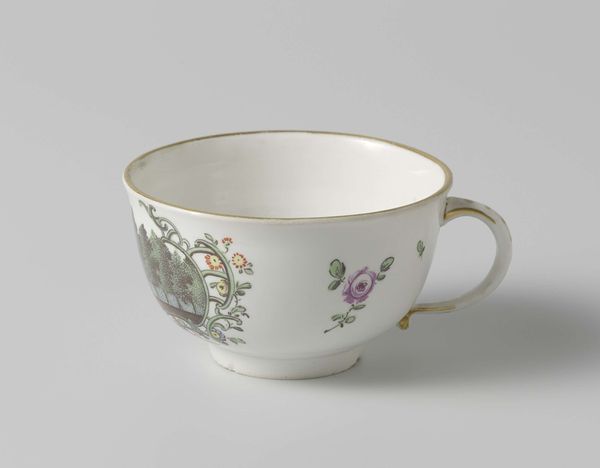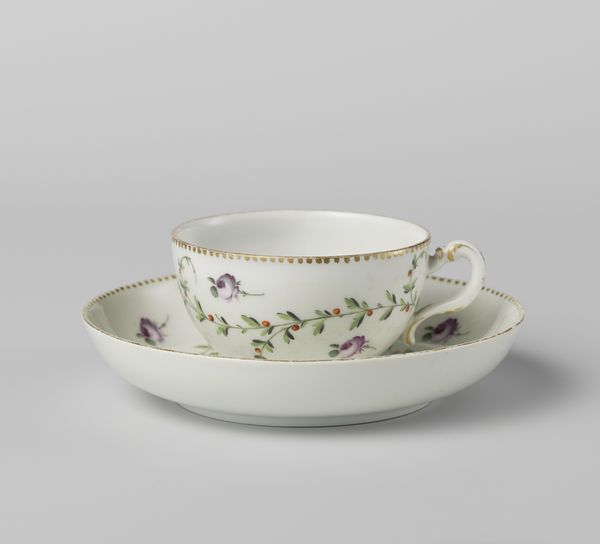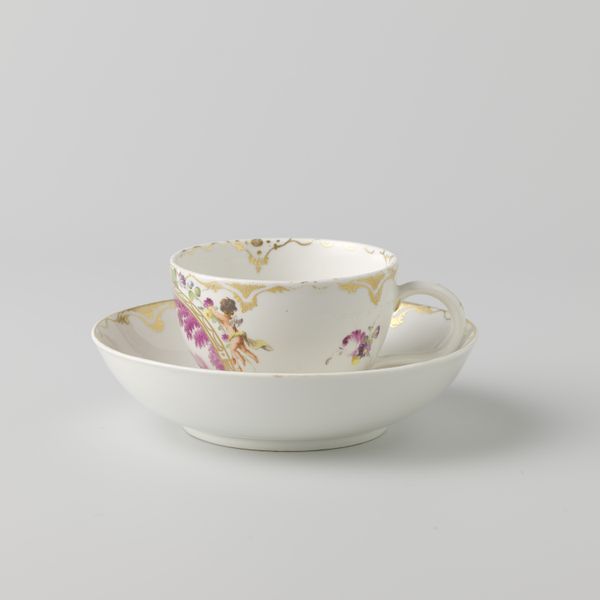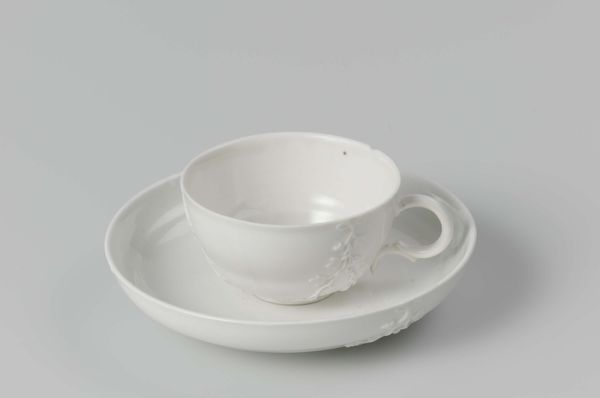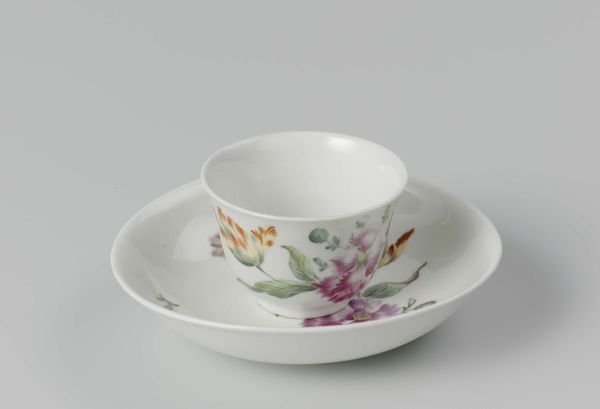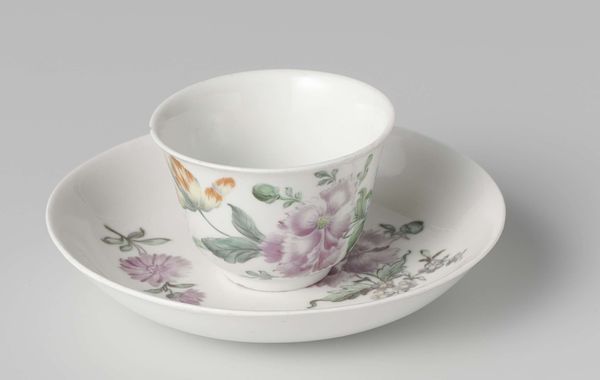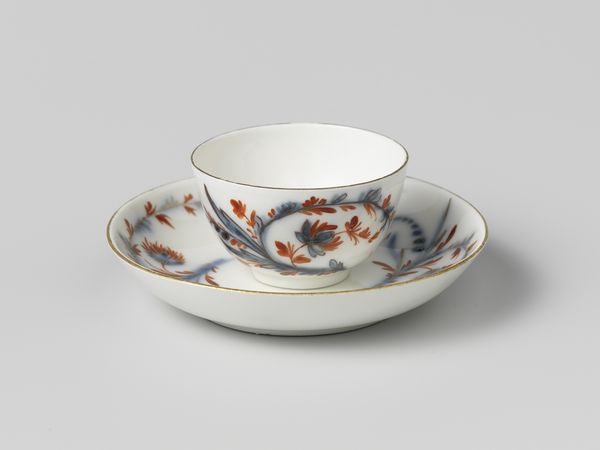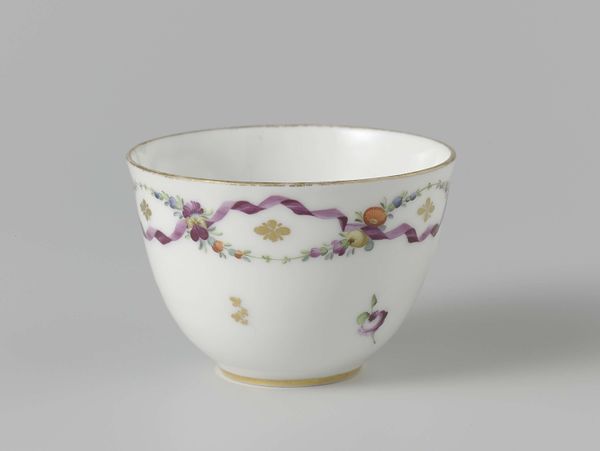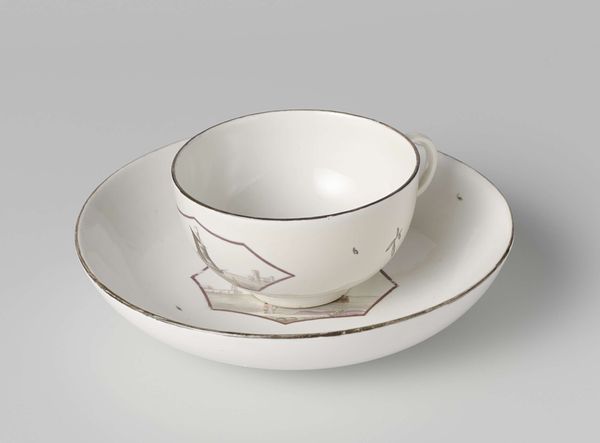
ceramic, porcelain
#
ceramic
#
porcelain
#
figuration
#
ceramic
#
decorative-art
#
rococo
Dimensions: height 4.6 cm, width 9.1 cm, diameter 7.5 cm, height 2.8 cm, diameter 13 cm
Copyright: Rijks Museum: Open Domain
Curator: Isn't this "Cup and Saucer" from around 1770, produced by the Königliche Porzellan Manufaktur, exquisite? Editor: It does possess a certain…delicacy. The overall paleness gives a subdued, almost melancholic feel. The decoration doesn't feel quite integrated with the form, as if layered on as an afterthought. Curator: On the contrary, the Rococo style aims for precisely that lightness of touch. These motifs of cherubs represent innocence and the carefree joy associated with the elite culture of that period. It mirrors an interest in sentimentality, where everyday objects are invested with higher emotional concepts. Editor: But that very sentiment feels…contrived. The limited color palette reinforces a sense of artifice, and it speaks to an avoidance of deeper color values or a bold expression. What is that overall pattern; some strange honeycomb effect? Curator: It could be meant to reference the golden age, a nostalgic reaching back for lost beauty and order using simple geometric patterns combined with lavish figures. And it represents more than mere nostalgia—it speaks to the desire to revive ancient virtues within the daily ritual of drinking. Editor: Ah, so the act of drinking then gains symbolic weight? That makes more sense; one doesn't merely drink but engages with the entire history of art and civilization through this ritual, no? Now that changes how I see this artifact. Still, I can't quite embrace the style overall! Curator: Indeed. Even something as simple as a cup and saucer could carry that emotional weight. They believed they were consuming more than tea, perhaps wisdom! It all goes back to how society understands value and how such value gets embodied through everyday forms. Editor: I concede to the idea of deeper embedded symbolism in that geometric texture; I will observe it with a refreshed awareness next time I see its likeness on display at the Rijksmuseum! Thank you!

